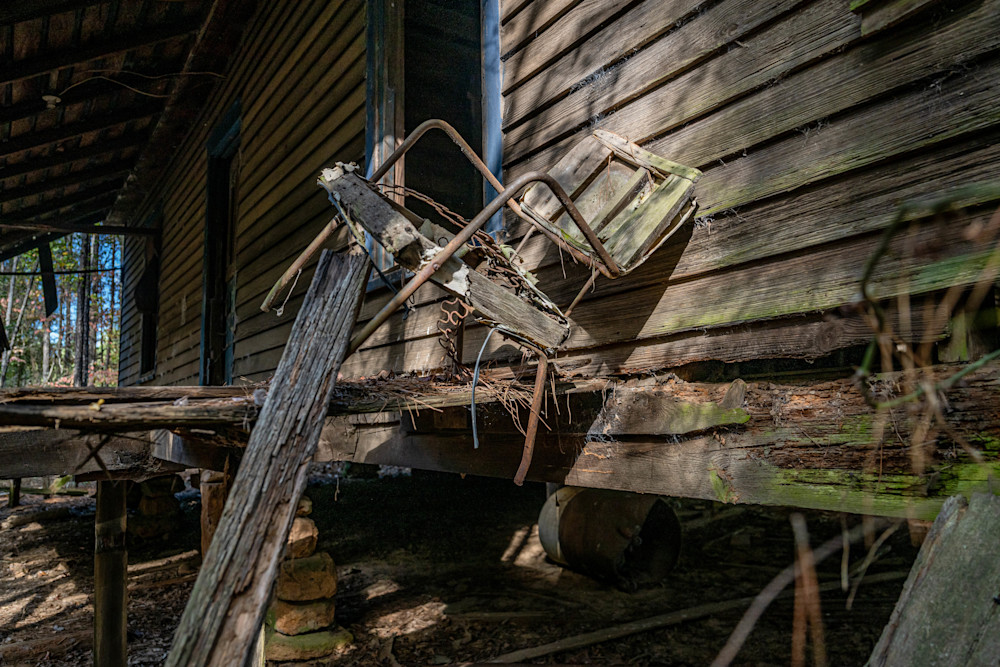In the quiet countryside near Avera, Georgia, a forgotten farmhouse stands as a testament to the passage of time. On its weathered and crumbling porch sits an old chair, weathered and worn, bearing witness to the decades that have slipped away.
The porch, once a welcoming entrance, now showcases the charm of decay. Wooden boards creak beneath the weight of memories, and the paint, long faded, peels away in delicate layers. The railings, once sturdy, now tell stories of countless sunsets and storms that have swept through the landscape.
Amidst this scene of quiet abandonment, the old chair sits with a quiet dignity. Its wooden frame, though worn, retains a sense of solidity, evoking memories of moments spent in the gentle embrace of the rural breeze. Perhaps it was a seat where farmers rested after a day's labor, or a spot where family members gathered to share stories under the vast Georgia sky.
Surrounded by the stillness of the countryside, the old chair becomes a focal point, a solitary figure against the backdrop of the forgotten farmhouse. Its peeling paint and weathered surface are a reflection of the passage of time, a visual metaphor for the resilience and endurance of objects left behind.
As the sunlight filters through the overhanging trees, casting dappled shadows on the porch, the old chair becomes a poignant symbol—a humble reminder of the lives once lived within the walls of the farmhouse and the stories etched into the fabric of time in this quiet corner near Avera, Georgia.
















